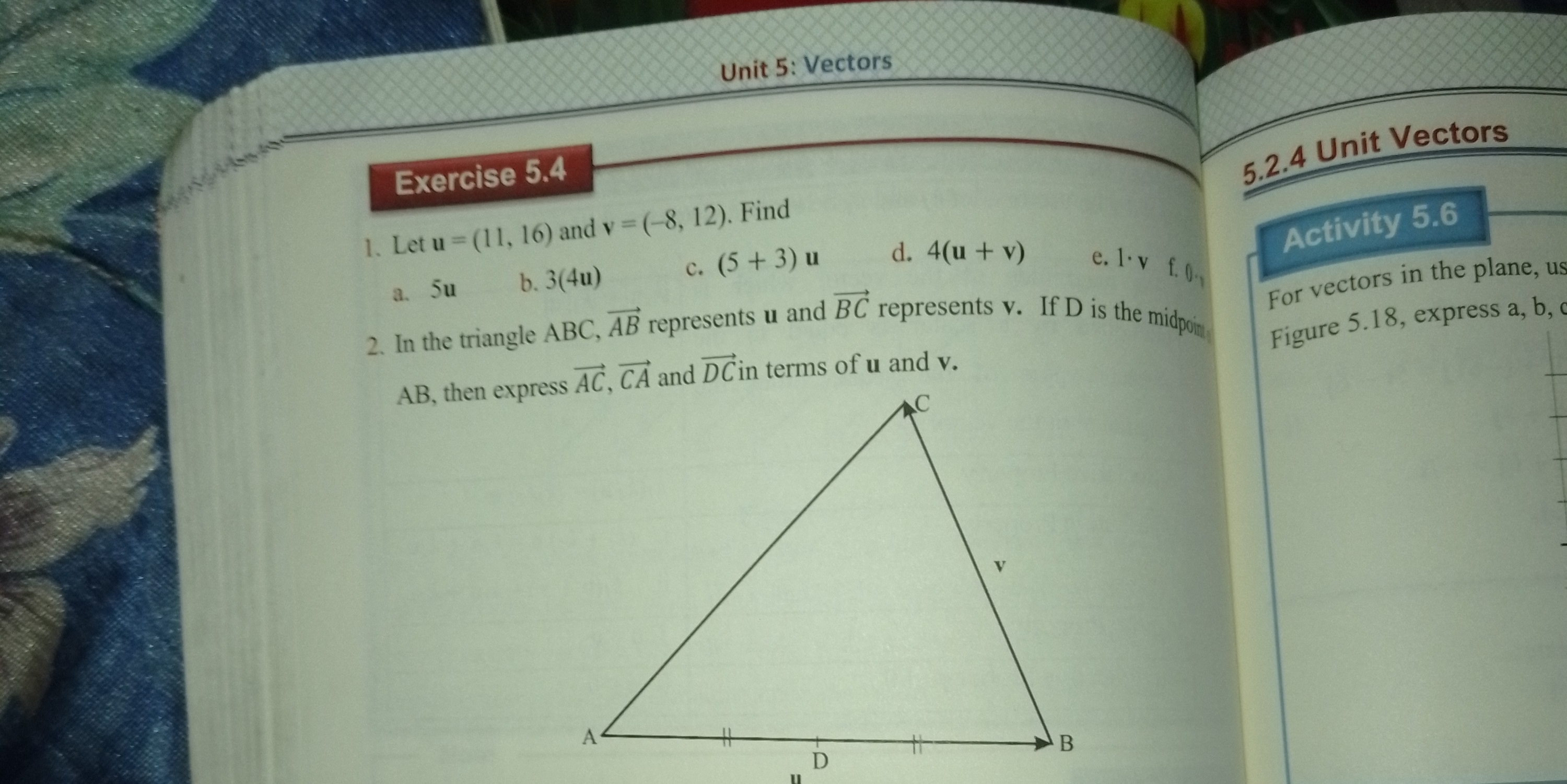In the triangle ABC, AB represents u and BC represents v. If D is the midpoint of AB, then express AC, CA and DC in terms of u and v.

Understand the Problem
This is a linear algebra question involving vector operations. The task is to express the vectors AC, CA, and DC in terms of vectors u and v, given that AB represents u, BC represents v, and D is the midpoint of AB.
Answer
$\overrightarrow{AC} = u + v$ $\overrightarrow{CA} = -u - v$ $\overrightarrow{DC} = \frac{1}{2}u + v$
Answer for screen readers
$\overrightarrow{AC} = u + v$ $\overrightarrow{CA} = -u - v$ $\overrightarrow{DC} = \frac{1}{2}u + v$
Steps to Solve
- Express $\overrightarrow{AC}$ in terms of $\overrightarrow{AB}$ and $\overrightarrow{BC}$
Using vector addition, we can express $\overrightarrow{AC}$ as the sum of $\overrightarrow{AB}$ and $\overrightarrow{BC}$. $$ \overrightarrow{AC} = \overrightarrow{AB} + \overrightarrow{BC} $$ Since $\overrightarrow{AB} = u$ and $\overrightarrow{BC} = v$, we get: $$ \overrightarrow{AC} = u + v $$
- Express $\overrightarrow{CA}$ in terms of $\overrightarrow{AC}$
The vector $\overrightarrow{CA}$ is the negative of $\overrightarrow{AC}$. Therefore, $$ \overrightarrow{CA} = - \overrightarrow{AC} = - (u + v) = -u - v $$
- Express $\overrightarrow{DC}$ in terms of $\overrightarrow{DA}$, $\overrightarrow{AB}$ and $\overrightarrow{BC}$
Since D is the midpoint of AB, $\overrightarrow{AD} = \frac{1}{2} \overrightarrow{AB} = \frac{1}{2}u$. Thus, $\overrightarrow{DA} = - \overrightarrow{AD} = - \frac{1}{2}u$. Now, we can express $\overrightarrow{DC}$ as the sum of $\overrightarrow{DA}$ and $\overrightarrow{AC}$. $$ \overrightarrow{DC} = \overrightarrow{DA} + \overrightarrow{AC} $$ $$ \overrightarrow{DC} = - \frac{1}{2}u + (u + v) $$ $$ \overrightarrow{DC} = \frac{1}{2}u + v $$
$\overrightarrow{AC} = u + v$ $\overrightarrow{CA} = -u - v$ $\overrightarrow{DC} = \frac{1}{2}u + v$
More Information
These solutions express each vector in terms of the given vectors $u$ and $v$, using vector addition and scalar multiplication. The midpoint condition is crucial for finding $\overrightarrow{DC}$.
Tips
A common mistake is to incorrectly assign the direction of the vectors, especially when dealing with $\overrightarrow{CA}$ and $\overrightarrow{DA}$. For example, confusing $\overrightarrow{AD}$ with $\overrightarrow{DA}$ can lead to incorrect signs in the final expressions. Also, students may forget to use the midpoint information correctly when finding $\overrightarrow{DC}$.
AI-generated content may contain errors. Please verify critical information